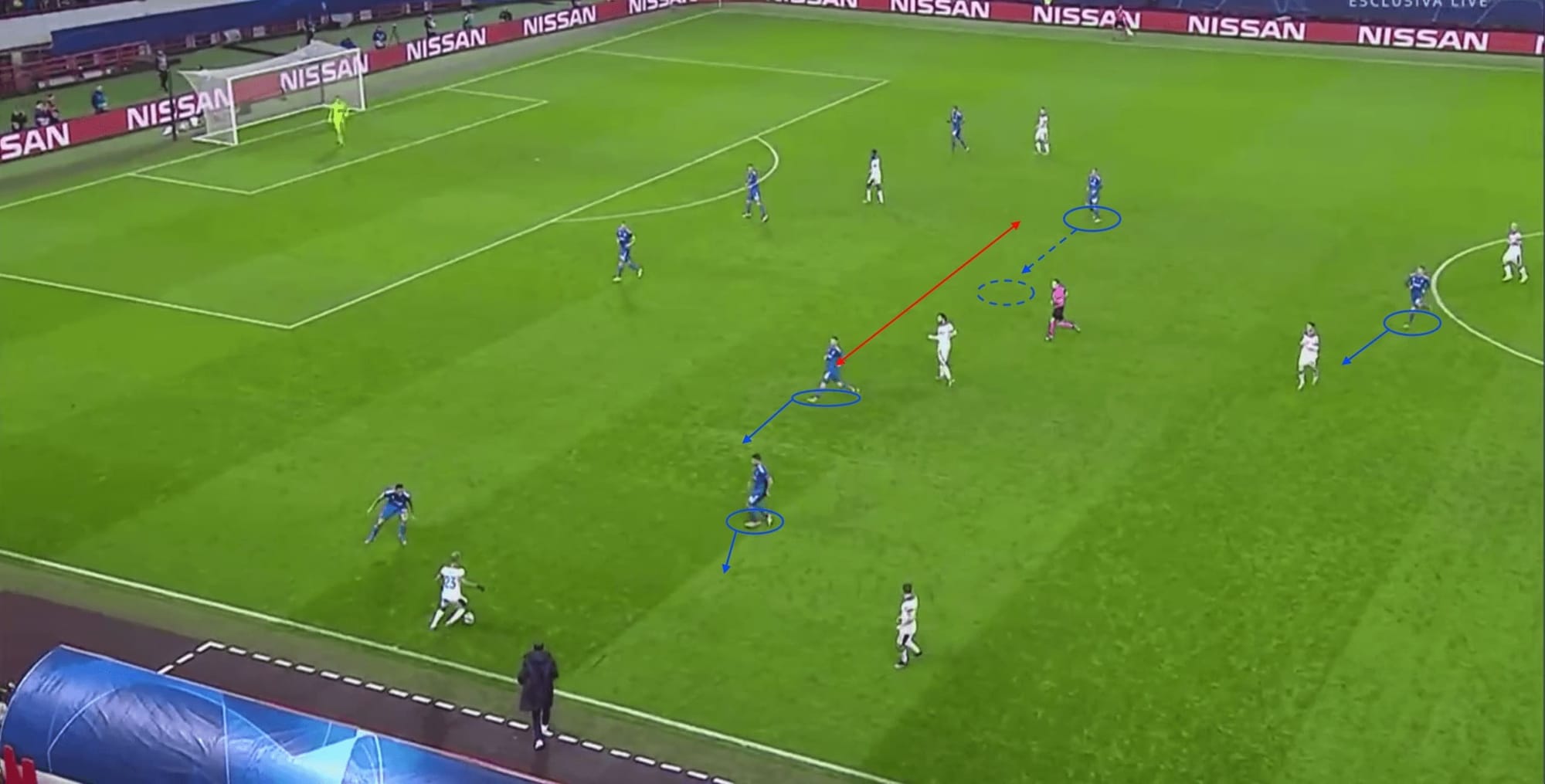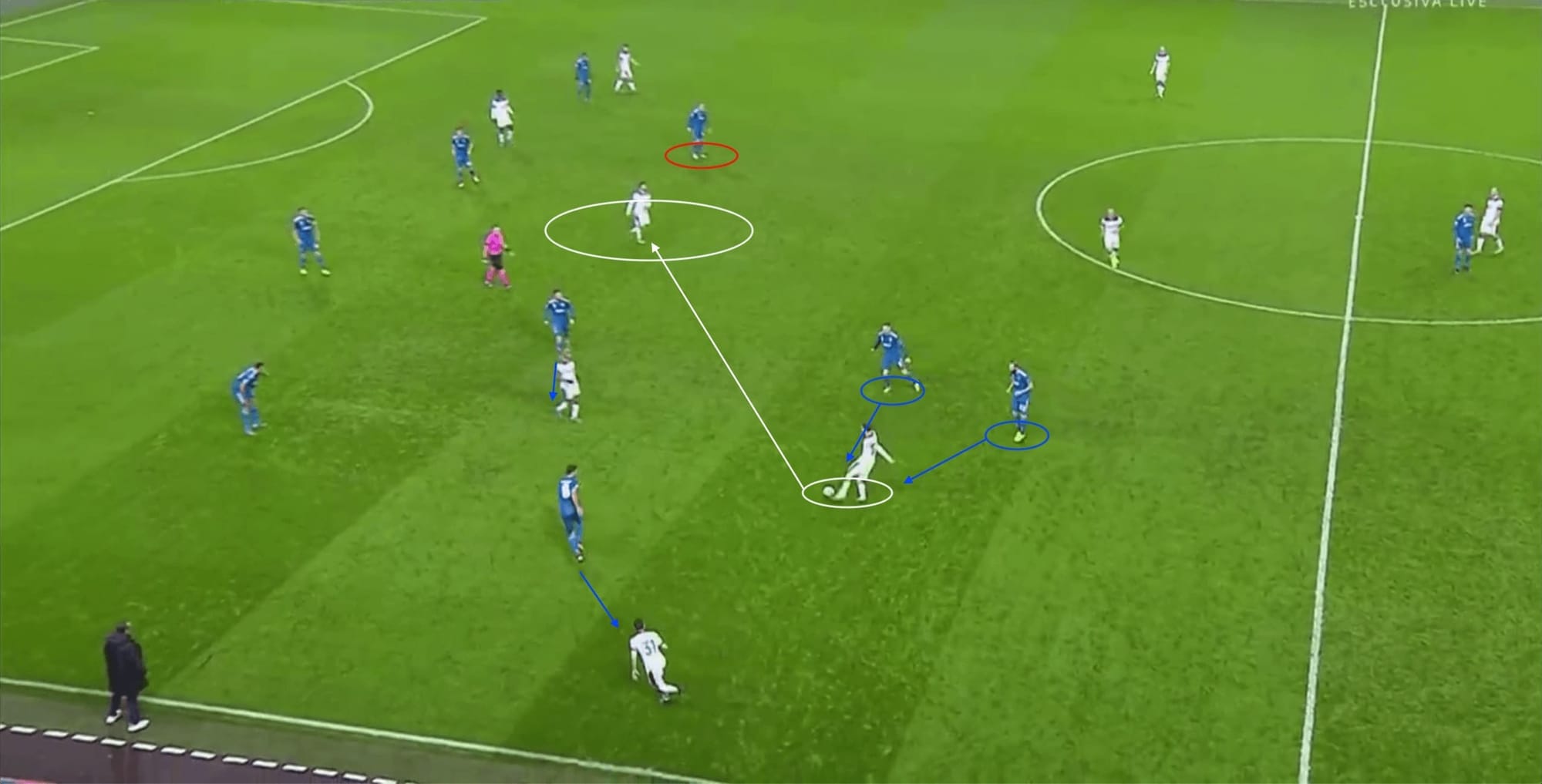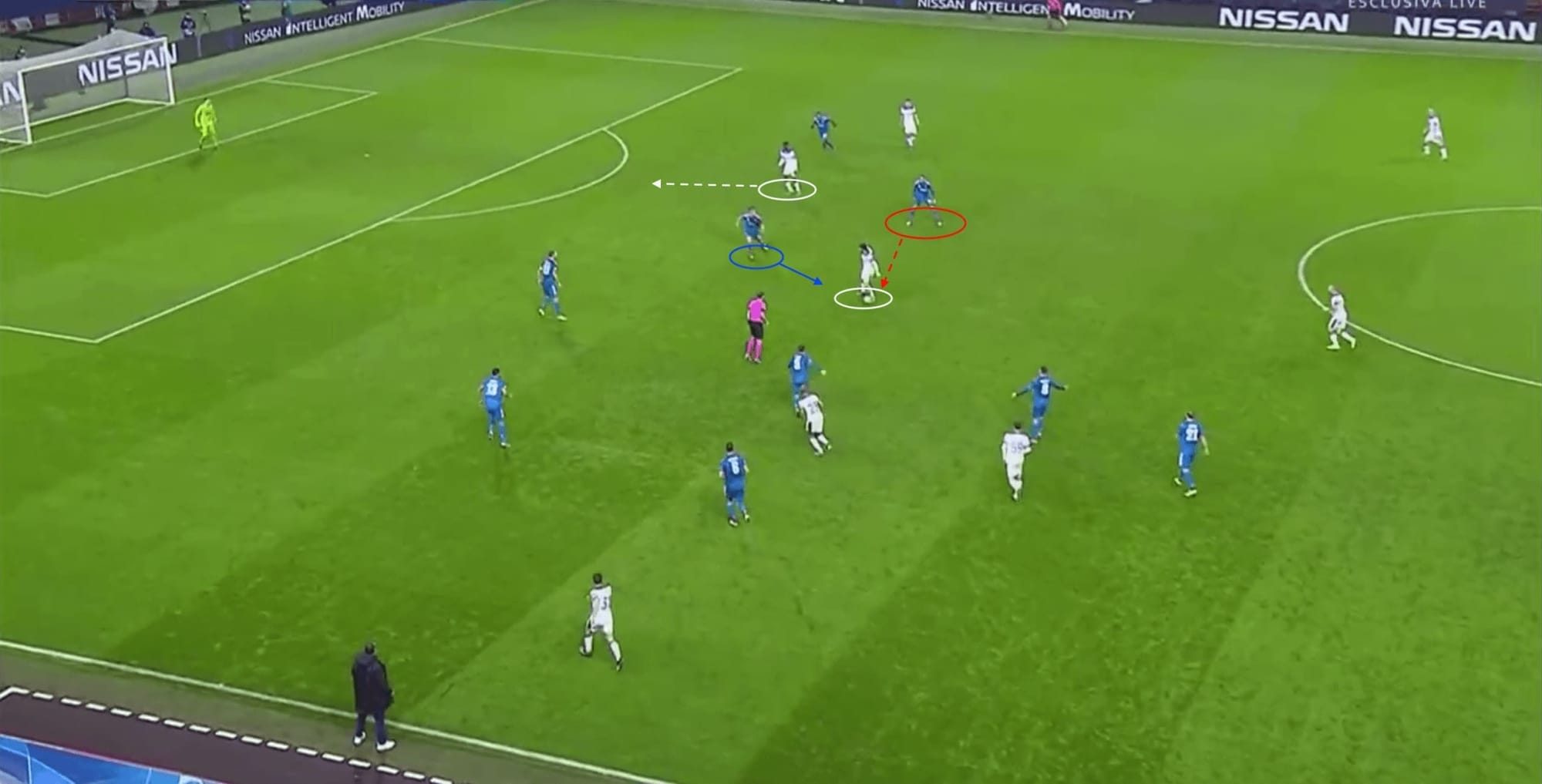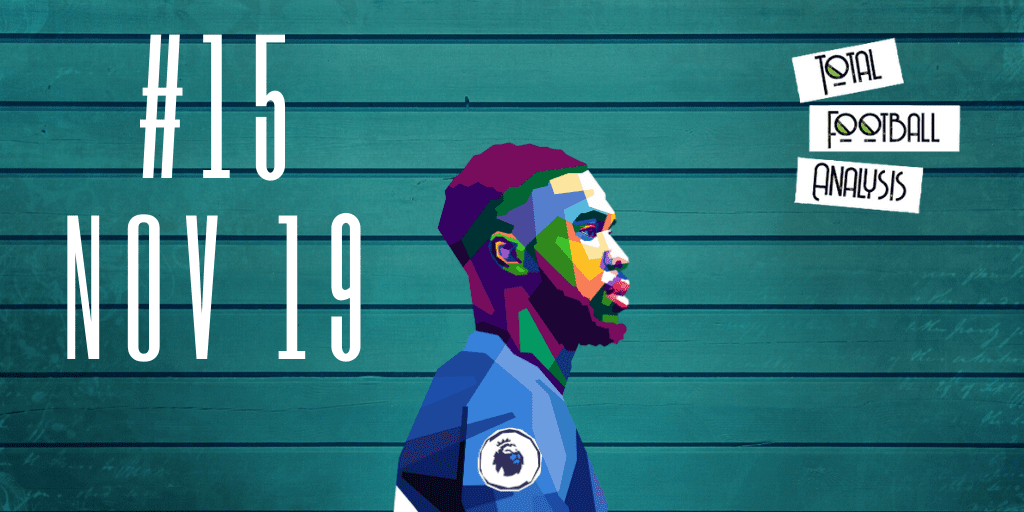Matchday four in the UEFA Champions League is the start of the home straight towards qualification. A strong run of form from earlier in the group can now be rewarded with an early progression. Great for the side’s who are mounting a domestic challenge who can use the spare games to rotate their squad, safe in the knowledge of their guaranteed passage. Those with a disappointing start enter into the now-or-never phase, where tricky away fixtures must be turned into three points in order to stay in the challenge for a top-spot or face slumping out of the competition before the real fun starts.
In this tactical analysis, we look at how Juventus sealed their qualification despite looking unconvincing in their tactics. We also provide an analysis of how a lively Lokomotiv Moscow side nearly shocked the Italian giants on home soil.

The hosts started in a 4-4-1-1 system, deploying Aleksey Miranchuk in the ’10’ role, starting slightly behind Eder. His duty out of possession was to drop into midfield to make up a narrow, congested midfield that sought to block the passing lanes from a contained lower block. In transition, the Russian used his speed to break away from a slowly retreating Juventus defensive unit.
Veterans Benedikt Höwedes and Vedran Ćorluka started as the centre-back pairing, their lack of pace was protected by the narrow, deeper shape occupied by the Lokomotiv midfield who set-up tactically to ensure defensive protection at all times.
That’s not to say that Lokomotiv battened down the hatches in any sense, they merely focussed on reducing their defensive transition times by quickly occupying a robust shape with small vertical spaces between the lines. From this shape, Lokomotiv then looked to exploit the spaces left by the advancing visitors who pushed players forward in an attempt to breakthrough. The Russians found success in this tactic, with 36.36% of their counter-attacks ending in a shot at goal.
Maurizio Sarri started his side in a 4-3-1-2/4-D-2 shape. The midfield diamond consisted of Aaron Ramsey, who took up a slightly more advanced position behind Cristiano Ronaldo and Gonzalo Higuaín upfront. Sami Khedira and Adrien Rabiot occupied the central midfield line, which was hinged by Miralem Pjanić who adopted a deep-lying playmaker role in the heart of the pitch.
The diamond remained narrow to reduce passing distances in order to use quick interchanges between the technical midfielders, who also used positional rotations in an attempt to play through the rigid hosts. Conversely, however, the narrow diamond played into the Lokomotiv’s strengths as Juventus failed to stretch the home side’s shape and got bogged down in a heavily congested central zone. Alex Sandro and Danilo were the starting full-backs, they often found themselves under-used in large unoccupied spaces due to the narrow nature of both side’s tactics.

Lokomotiv didn’t see too much of the ball, they only achieved a possession percentage of 33%, demonstrating their focus on defensive shape over the creation of sustained attacks using build-up play. As we can see above, there was little interaction between the central defenders and the central midfielders Grzegorz Krychowiak and Dmitri Barinov. The home side averaged just 2.89 passes per possession in their attempts to counter-attack using direct passing through vertical lines.
When in controlled possession, the home side looked to exploit the space vacated by the 4-D-2 system used by their opponents. We can see the stronger links came from the advancing runs made by full-backs Vladislav Ignatyev (20) and Maciej Rybus (31) who forced the Juventus diamond to shift laterally, turning it into a distorted rhombus. This lack of defensive organisation from the visitors when shifting laterally created large spaces to play through and yielded success for Lokomotiv, which we look at later on.

The Juventus passing network tells a different story. The Italian’s preferred a shorter passing game using positional rotations to create space. They averaged 6.63 passes per possession with just 4.7% of those being long passes.The collision of both narrow tactics is evident above as you can see how many players often occupied the same passing lanes. This resulted in fewer passing options available to the ball player and subsequently lead to less incisive attacks with build-up play becoming stifled in the early phases.From the network, we can also see how much space in the wide spaces was sacrificed in preference of short passing in highly concentrated zones. The visitors often failed to use their full-backs on the wings who had ample space to move into. This resulted in the home side resorting to mid-range angled passes in behind into the two strikers. The tactic was reduced to heavily relying on the sharp movement of Ronaldo and Higuaín as opposed to focusing on dynamic attacks with a tactical aim.
An unpolished diamond
In the early stages of their attacks, Juventus occupied a high line, with the central defenders heavily involved in the rotations of possession. The success of a 4-D-2 comes from a mobile midfield making sharp movements into passing lanes as the possession rotates across the back four.

Lokomotiv did an excellent job of remaining narrow and in their discipline were successful in disrupting the passing sequences of Juventus. As you can see above, the diamond is set ahead of the ball-player who is looking to find a penetrative pass into midfield. Lokomotiv’s 4-4-1-1 was successful in blocking the lanes with Miranchuk constantly preventing the easy pass into the pivot – Pjanić.

A lack of impetus to exploit to space on the wings (highlighted) in combination with a static midfield left Higuaín and Ronaldo isolated in the build-up play as the attacks often broke down in their infancy. It was here where the diamond’s weakness became apparent.We can see above, that when the Juventus midfielders did make movements to find space they often attempted the same runs due to the lack of space available. This resulted in players becoming too close to each other and occupying the same passing lanes. This was easy to shadow mark as you can see just one Lokomotiv player’s positioning blocked the passing lane into three Juventus players.The problems didn’t stop there for the Italian’s who also struggled to implement the diamond effectively when they eventually lost the ball.

The away side struggled in defensive transition aswell. We see above the diamond in its shape as possession is turned over in the midfield. The Lokomotiv players burst forward in offensive transition attempting to catch Juventus in their reorganisation phase.

The ball is eventually moved into the wide spaces, where the diamond now begins to become disorganised. Two of the midfielders have been quick to move across to prevent an overload from occurring. Unfortunately, this has not occurred in unison with the other midfielders who are slow to get across. We can see the gap (highlighted) that has occurred between the midfielders.

A key requirement of playing in a narrow midfield diamond is mobility in shifting laterally. Khedira, Pjanić, Ramsey and Rabiot are not blessed with athleticism. Being more technically gifted players, they struggled to cover the ground required to keep a solid defensive shape.

Lokomotiv were able to work the ball through the spaces vacated by the immobile midfield and created chances through the centre of Juventus’s shape. The home side amassed an xG of 1.43 playing through the middle in this way.On another day the Russian side would have punished their opponents. However, on this occasion, they missed some big chances and eventually fell foul to a goalkeeping error and individual brilliance from substitute Douglas Costa as Juventus stumbled through to the knockout stages – albeit unconvincingly.
Conclusion
Sarri and his men will be pleased to guarantee an early progression to the latter stages of the competition. However, on closer inspection, the Italians will be disappointed with a poor performance in the tactical aspects of their game. Instead of tactical fluidity, they relied on grit and individual skill to yield a result. Though these are necessary traits if you want to win a competition of this magnitude, you can’t help but feel against a better team Juventus will need to improve otherwise they’ll be exploited with severe consequences.
Lokomotiv can reflect positively on this performance and will feel they deserved at least a point from the chances they created. This result has effectively ended their chances of qualifying from the group stages however, they will look to finish strong using the confidence from this match to believe they can get a result in Madrid – who knows.

If you love tactical analysis, then you’ll love the digital magazines from totalfootballanalysis.com – a guaranteed 100+ pages of pure tactical analysis covering topics from the Premier League, Serie A, La Liga, Bundesliga and many, many more. Buy your copy of the November issue for just ₤4.99 here

If you love tactical analysis, then you’ll love the digital magazines from totalfootballanalysis.com – a guaranteed 100+ pages of pure tactical analysis covering topics from the Premier League, Serie A, La Liga, Bundesliga and many, many more. Buy your copy of the November issue for just ₤4.99 here





Comments